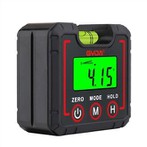The working principle of electrochemical gas detector
A considerable portion of flammable, toxic, and harmful gases in gas detectors have electrochemical activity and can be electrochemically oxidized or reduced. By utilizing these reactions, gas composition can be distinguished and gas concentration can be detected. Electrochemical gas sensors are divided into many subcategories:
(1) The principle of the original battery type gas detector (also known as the Gavoni battery type gas sensor, fuel cell type gas sensor, or spontaneous battery type gas sensor) is the same as the dry battery we use, except that the carbon manganese electrode of the battery is replaced by a gas electrode. Taking an oxygen sensor as an example, oxygen is reduced at the cathode, and electrons flow through an ammeter to the anode, where lead metal is oxidized. The magnitude of the current is directly related to the concentration of oxygen. This type of sensor can
(2) Constant potential electrolytic cell type gas detector, this sensor is very effective for detecting reducing gases. Its principle is different from the original battery type sensor, and its electrochemical reaction occurs under the force of current. It is a true Coulomb analysis sensor. This type of sensor has been successfully used in the detection of gases such as carbon monoxide, hydrogen sulfide, hydrogen, ammonia, hydrazine, etc. It is currently the mainstream sensor for detecting toxic and harmful gases.
(3) The concentration battery type gas detector, with electrochemically active gas on both sides of the electrochemical cell, will spontaneously form a concentration electromotive force. The magnitude of the electromotive force is related to the concentration of the gas. Successful examples of such sensors are oxygen sensors for automobiles and solid electrolyte type carbon dioxide sensors.
(4) The limit current type gas detector has a sensor for measuring oxygen concentration, which uses the principle that the limit current in the electrochemical cell is related to the carrier concentration to prepare an oxygen (gas) concentration sensor for oxygen detection in automobiles and oxygen concentration detection in molten steel.







